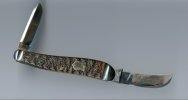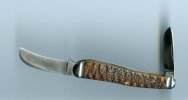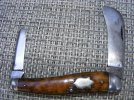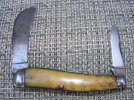SteveC
Gold Member
- Joined
- Jul 13, 2017
- Messages
- 16,267
I'm lovin' the Wostenholms Steve, one of my favorite makers.
Valley Forge
View attachment 2727272View attachment 2727273
Thanks, mine too
The BladeForums.com 2024 Traditional Knife is available! Price is $250 ea (shipped within CONUS).
Order here: https://www.bladeforums.com/help/2024-traditional/
I'm lovin' the Wostenholms Steve, one of my favorite makers.
Valley Forge
View attachment 2727272View attachment 2727273
Wow that's a real beauty ... any more pics !?View attachment 2725971Robeson, 100 years old!
Wonderful jigging José. It adds so much to that clip point.
Nice!!! The knife ain't bad either!!!
Beautiful old knife, Augie!
Lovely old Robeson, looks hardly used!
wow incredible knife !! Thanks
I've always identified it as English jigging. All the major English companies had knives from this bone handle source.Sometimes you can tell the Age, Brand or country of origin of a knife, by the texture on the (usually) bone handles!! Pick-bone often indicates early American cutlery, early 1900s back through late 1800s!! Peachseed jigging is seen from World War eras cutlery! "Flat-Cap" jigging (a modern term) resembles the weave in tweeds, and is found on Sheffield and other UK knives from the turn of the 1900s to the middle 1900s!! That subject can certainly be further discussed beyond my generalizations here!! I invite more knowledgeable people to comment!!
One type of surfacing that is less often seen is Checkering!! You see it on the stocks of many firearms, but more rarely on cutlery, both fixed and folding!! Scratting, an archaic term for "scratching" was used in early Sheffield to improve grip and appearance, and is related to checkering, probably a crude and early form of checkering!!!
Checkering is more often found on custom cutlery, and occasionally on upscale production knives!
Here are some pictures of various forms of the art!!
Modern GEC!!View attachment 2731637View attachment 2731638Queen's version of Sheffield!!View attachment 2731642Modern custom!! An Ancient recover by Evan (Esnyx!)!! Quite fine checkering!!View attachment 2731651
Nice!!! The knife ain't bad either!!!




